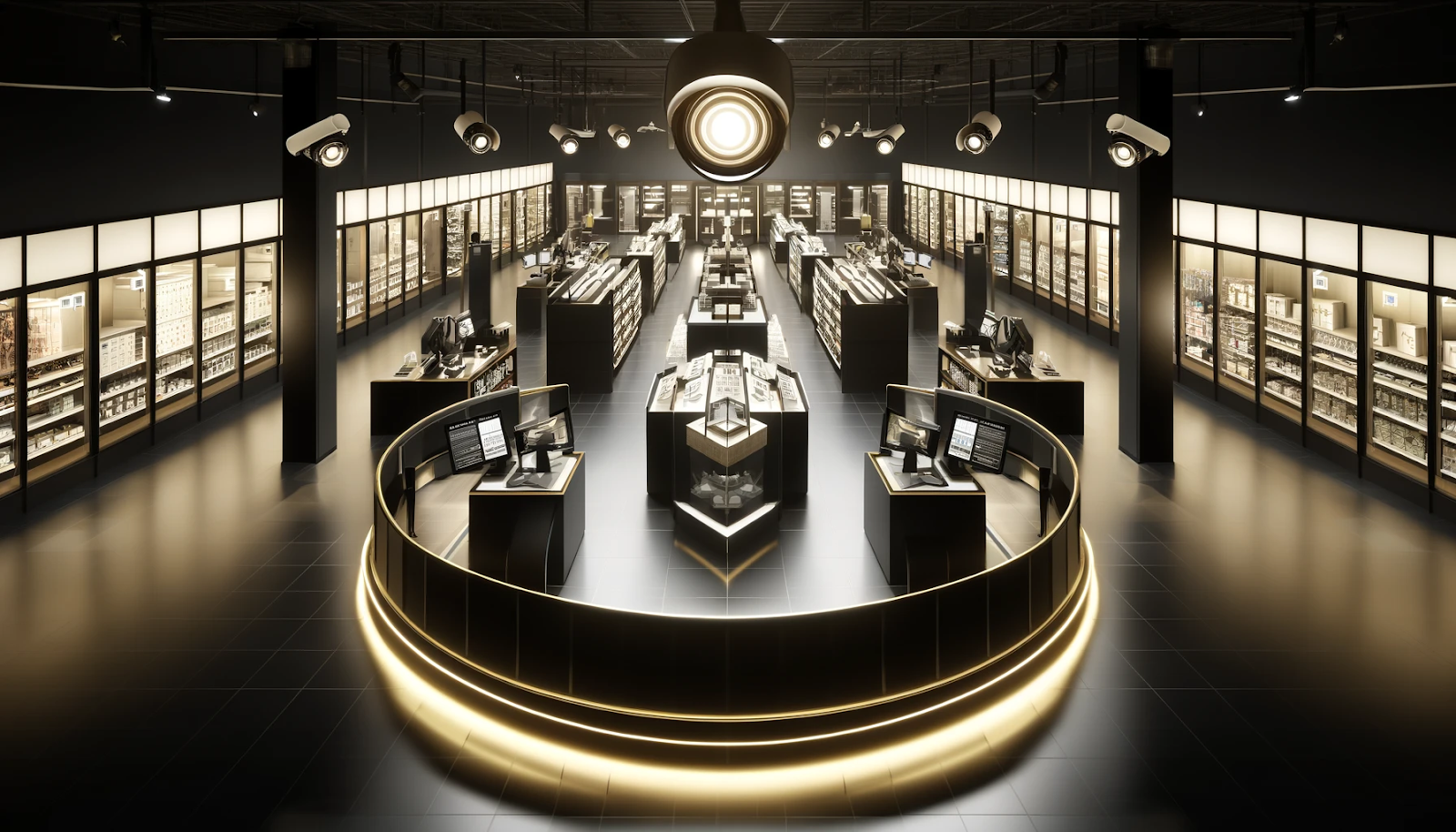Enhancing security through strategic lighting and layout designs is crucial for increasing visibility and deterring crime in retail environments. Property managers, chief security officers, and security company hiring managers can leverage these strategies to create safer shopping experiences and protect assets effectively. Here, we delve into key methods and practices to enhance retail security using lighting and visibility.
The Importance of Lighting in Retail Security
Proper lighting is a fundamental aspect of retail security. It not only helps in deterring potential criminals but also makes customers feel safer. Well-lit areas are less attractive to those with malicious intent because the risk of being seen and identified is higher.
Key Areas to Illuminate
- Entrances and Exits: These should be brightly lit to ensure clear visibility of anyone entering or leaving the premises.
- Parking Lots and Exterior: Outdoor lighting is crucial for safety and security. It deters crime and helps customers feel safe.
- Aisles and Corridors: Even lighting throughout the store helps reduce shadows and blind spots, where suspicious activities can go unnoticed.
- Cash Registers and High-Value Displays: Bright lighting in these areas enhances visibility for surveillance cameras and staff monitoring.
Types of Lighting
- LED Lighting: Energy-efficient and long-lasting, ideal for continuous use.
- Motion-Sensor Lights: Activate upon detecting movement, which is useful for alerting security personnel.
- Emergency Lighting: Ensures visibility during power outages or emergencies.
Enhancing Visibility Through Layout Design
Strategic layout design can significantly enhance visibility and deter crime. An open layout with clear sightlines allows for better monitoring of activities within the store.
Effective Layout Strategies
- Open Floor Plans: Reduces hidden areas where criminals can conceal themselves or steal goods.
- Low Shelving Units: Keeps sightlines open for both customers and security personnel.
- Strategically Placed Mirrors: Expands visibility into blind spots and corners.
- Clear Signage: Helps customers navigate the store easily, reducing confusion and loitering.
Technology Integration
- Surveillance Cameras: Placed at strategic points to cover all areas of the store.
- Mirrors and Reflective Surfaces: Enhance visibility in aisles and corners.
- Access Control Systems: Limit access to sensitive areas within the store.
The Role of Security Personnel
Well-trained security personnel are essential in implementing and monitoring these strategies. Their presence alone can deter criminal activities.
Best Practices for Security Personnel
- Regular Patrols: Security personnel should regularly patrol the premises to ensure all areas are secure.
- Customer Service Approach: Engaging with customers can deter potential criminals by making them feel observed.
- Incident Reporting: Quick and accurate reporting of any suspicious activity is crucial.
FAQs
How does lighting deter crime in retail environments?
Good lighting increases the risk for criminals to be seen and identified, making it less likely for them to attempt theft or vandalism.
What type of lighting is best for retail security?
LED lighting is preferred for its energy efficiency and longevity. Motion-sensor lights are also useful for alerting security personnel to movement.
How can layout design enhance security?
An open floor plan with clear sightlines, low shelving, and strategically placed mirrors helps in reducing blind spots and improves monitoring.
What role do security personnel play in these strategies?
Security personnel enforce security measures, monitor activities, and engage with customers to deter criminal activities.
Implementing these lighting and visibility strategies can significantly enhance the security of retail environments, making them safer for both customers and staff.
.png)
.png)
.png)

.png)
.png)

.png)
.png)
.png)
.png)
